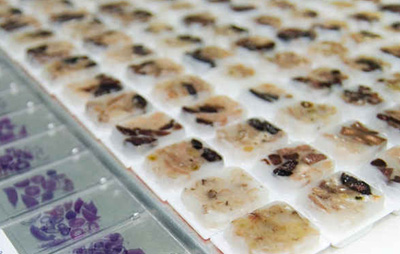Baboon Peripheral Nerve (NHP-TI139)

Category:Non-Human Primate (NHP) Tissue Block Products
Tag: Baboon, Tissue Block
Tag: Baboon, Tissue Block
- Baboon are large, robust, and primarily terrrestrial monkeys with orthographic processing abilities. This product is isolated from Baboons Nerve Tissue. The sample is negative for Herpes-B Virus, as well as SRV, SIV, STLV-1, and can be used for a variety of tests and assays such as PCR, Western blot, immunoprecipitation, immunofluorescent flow cytometry.
Detailed Product Description
- Source: Healthy baboon
- Applications: Given their robust resemblances to humans across physiological, behavioral, immunological, and genetic aspects, non-human primates serve as crucial models in a broad range of biomedical research, especially in bridging translational research from small animal models to humans. Creative Biolabs offers both standard formats and personalized non-human primate tissue preparations, catering to diverse in vitro testing applications.
- System: Nervous System
- Organ/Tissue: Peripheral nerve
- Shipping: Dry ice
Technical Specifications
- Preservation Methods: Snap frozen
- Quality Assurance: Tissue blocks are prepared by histologists with years of experience to be sure of excellent morphology and high quality.
- Packaging: Securely packaged to maintain the tissue quality during shipping.
Downloadable Resources
FAQs
Customer Reviews
-
Q 1: What are the primary research applications for Baboon Peripheral Nerve tissue?
A: Models for peripheral nerve injury and sometimes for neurodegenerative disease are the most sought areas of interest in studies focusing on regeneration of nerves, due to the far physiological proximity of baboon peripheral nerve to human tissues.
-
High-Quality
The Baboon Peripheral Nerve tissues from Creative Biolabs have played a crucial role in our peripheral nerve injury research. Their consistency and high quality have contributed significantly to our experimental outcomes.
Click the button below to contact us or submit your feedback about this product.
Related Products
Online Inquiry
This site is protected by reCAPTCHA and the Google Privacy Policy and Terms of Service apply.
NHP Biologicals from Creative Biolabs are for research, diagnostic, or manufacturing purposes only. They may not be intended for or are not approved for any other use.
Enter your email here to subscribe.
SubmitFollow us on

Copyright © 2026 Creative Biolabs. All rights reserved.

 Cynomolgus Monkey PBMCs
Cynomolgus Monkey PBMCs